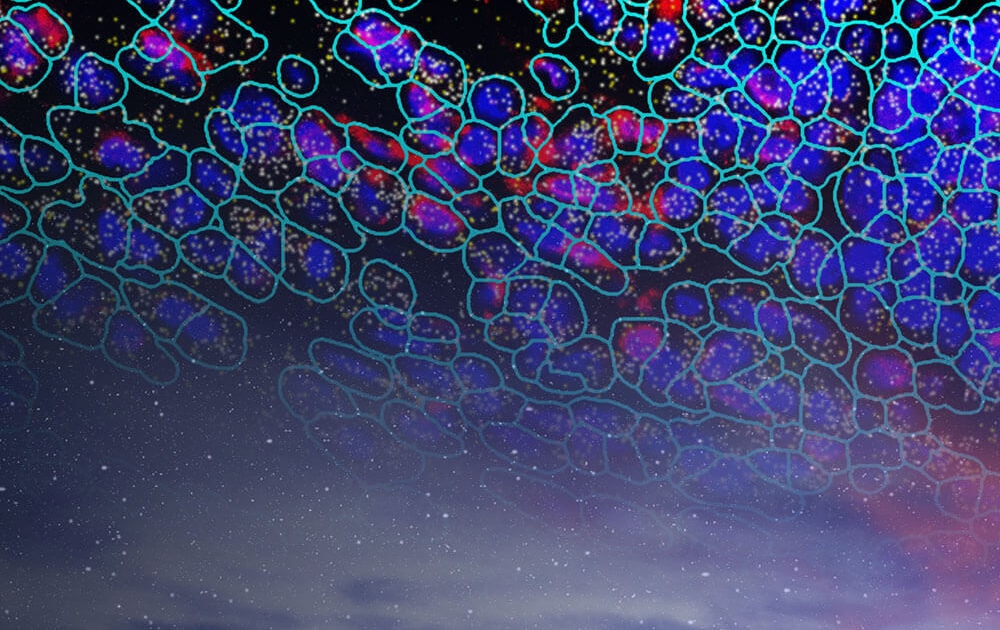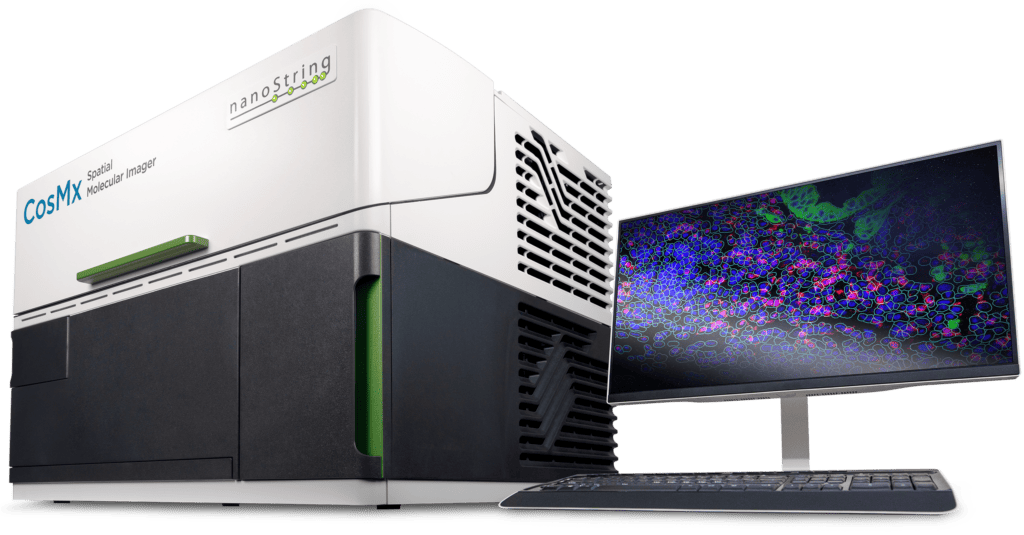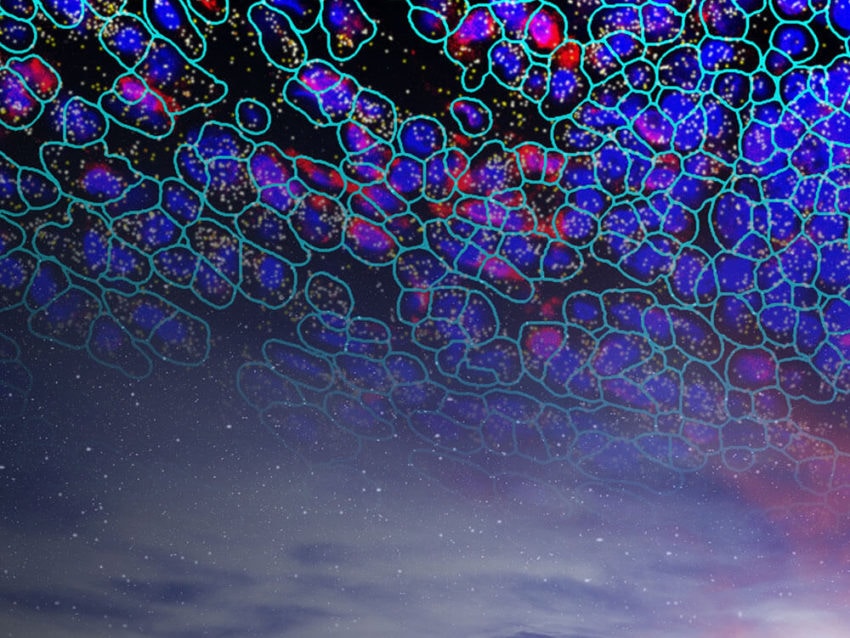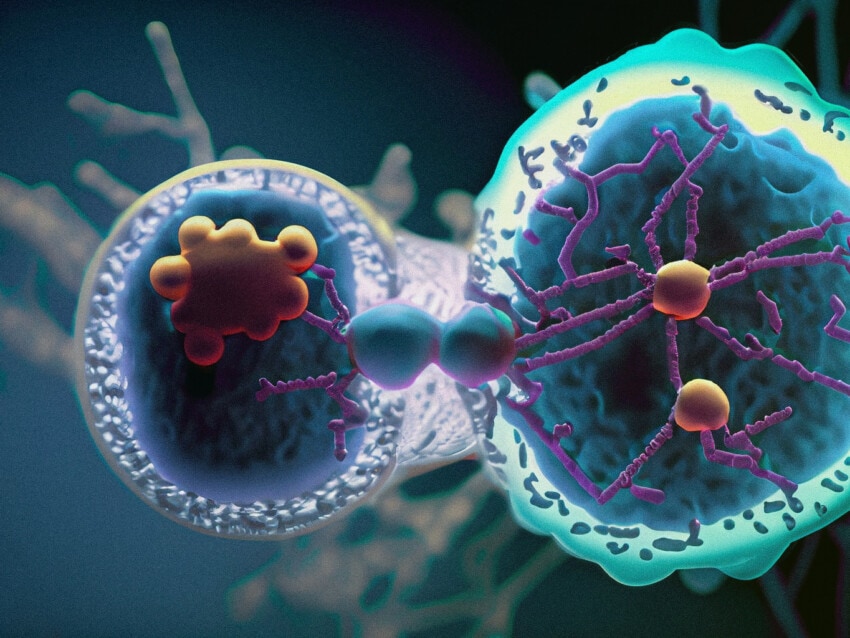
Common questions in molecular biology: What is the importance of cell interactions?
Can you imagine if a cell could send an email? Or put in a work request? Think of it:
Dear Immune System,
I am infected by a virus. Please send a white blood cell team over immediately.
Sincerely,
Nasal Epithelial Cell #794
Suffice it to say, cells don’t have email, phones, or typical ways of submitting a work request. And yet, for the body to be able to function normally as well as prevent disease, cells need to talk to one another. In fact, loss or imbalance of cell-cell interactions is a leading cause of diseases like cancer. In this Common questions in molecular biology blog post, I explore what cell interactions are and highlight their importance in maintaining function of the body. I also discuss the utility of studying cell-cell interactions using single-cell sequencing and NanoString’s CosMx™ Spatial Molecular Imager.
What are examples of cell-cell interactions?
Cell-cell interactions refer to communication between cells. This can be between adjacent, nearby, or distant cells. Cells can either be in a fixed location interacting using chemical signals or ligands or fixed cells interacting with mobile cells, such as those in the immune system.
The majority of cell-cell interactions are handled through receptor and ligand interactions. For instance, a cell giving off a signal releases a ligand. This ligand is then captured by another cell using their receptor. The receptor is responsible for transducing the signal inside the cell, which ultimately results in a biological change within the cell, such as changes in gene expression.
The majority of cell-cell interactions are handled through receptor and ligand interactions, though cell-cell interaction can also be mediated via direct physical contact through gap junctions.
Cell-cell interaction can also be mediated via direct physical contact. For example, growth inhibition keeps cells from growing on top of one another. Once cells grow to the point that they physically bump into one another, they typically stop growing. This is why in vitro cell cultures are typically monolayer cultures.
One key exception to growth inhibition is in cancer cells. Cancer cells no longer respond to this type of cell-cell interaction and is one reason why they begin to grow out of control.
Another example of direct cell-cell interactions mediated via physical contact is through gap junctions. Gap junctions are used both for linking cells together, and for cellular communication. Gap junctions are a small tube that connects adjacent cells. Small molecules like ions can pass through the tube. These small molecules are used to coordinate cellular activity, such as synchronizing heart beats in cardiac tissue.
For cells not physically connected to one another, cell-cell interactions rely on cell signaling. Cell signaling involves ligand receptor interactions. These specific interactions can vary depending on if the cells are in close proximity to one another or not. For example, in the case of Notch signaling, the ligand (called Delta), is still bound to the signaling cell.
This also highlights the importance of spatial relationships in studying cell-cell interactions, as the two cells must be positioned relative to one another such that a static Delta ligand on one cell can bind to and interact with a static Notch receptor on an adjacent cell. For cells that are far away from one another, they communicate via transport of ligands such as hormones through the blood. These hormones are able to enact a specific biological response on the target cell because they only bind to certain receptors found on particular cells.
Why are cell-cell interactions important?
The average human has 37.2 trillion cells in their body. Each of these cells is in constant contact with others in order for the body to function. Cell-cell interactions are crucial for the functioning of the whole. In order to maintain homeostasis, cells must interact with one another. For example, cell-cell interactions help maintain balance within the body. One way cells maintain balance is by providing checks and balances on each other. If a cell is no longer needed or not functioning correctly, other cells can stimulate it to undergo programmed cell death, or apoptosis.
Cells signaling to one another also facilitates negative feedback as well. For instance, in the context of the hypothalamic pituitary adrenal (HPA) axis, signals passed from the hypothalamus to the pituitary gland, and finally to the adrenal glands, all cause a reversible change in each target. Once the signal is passed along, cells signal back to each other in a mechanism called negative feedback to turn off the cellular response. Without the precise coordination among cells, there would be a breakdown of communication between cells leading to disease. In the context of the HPA axis, inability to efficiently turn off the cell signaling cascade is associated with diseases such as anxiety, depression, and post-traumatic stress disorder.

Cell-cell interactions are important for coordinating biological processes. For example, during wound healing, there are a variety of cellular processes and consequently cell-cell interactions occurring: if you cut your finger, there are a variety of cellular processes that immediately occur, from initiation of clotting to the beginnings of inflammation. Cells of the immune system are then recruited to help mitigate infection. New blood and skin cells then begin to form. Depending on the type of wound, new sweat glands and/or hair follicles can also begin to form. Given the role of a wide variety of cells all working in concert in a three dimensional environment, technologies like single-cell sequencing using the CosMx SMI are critical for uncovering the spatial and genomic dynamics that occur during wound healing.
Cell-cell interactions are also important for preventing disease. For example, cells in the innate immune system such as macrophages respond to chemical signals like histamines that indicate the presence of a microbial invader. Activated T cells are able to recognize cell surface markers that indicate cancer cells and destroy them. In terms of preventing cancer, studying the interaction between activated T cells and cancer cells can provide important insights in understanding how the body responds to cancer. In addition, understanding the genomic and molecular insights into this process with single-cell sequencing using NanoString’s CosMx Spatial Molecular Imager could lead to identification of potential therapies, improvements to Chimeric Antigen Receptor (CAR) T cell therapy, and enhanced assessment of the body’s response to treatments.
Cell-cell interactions are important for maintaining function of the body and disease prevention
Regardless of if one is considering interactions at the cellular or multicellular level, communication with various constituents is important for overall function. Our cells don’t have the ability to send an email or make a phone call if aid or a change is needed. Therefore, they instead rely on cell-cell interactions in the form of physical cell contact, or interactions between ligands and receptors.
Technologies such as single-cell sequencing using NanoString’s CosMx Spatial Molecular Imager are providing additional insights into the dynamics of cell-cell interaction and how these interactions occur and could be leveraged in the fight against diseases such as cancer. It will be exciting to see what spatial single-cell sequencing can tell us about the inner lives of the 37.2 trillion cells in our bodies and how to keep ourselves healthy.
The CosMx™ SMI and decoder probes are not offered and/or delivered to the Federal Republic of Germany for use in the Federal Republic of Germany for the detection of cellular RNA, messenger RNA, microRNA, ribosomal RNA and any combinations thereof in a method used in fluorescence in situ hybridization for detecting a plurality of analytes in a sample without the consent of the President and Fellows of Harvard College (Harvard Corporation) as owner of the German part of EP 2 794 928 B1. The use for the detection of cellular RNA, messenger RNA, microRNA, ribosomal RNA and any combinations thereof is prohibited without the consent of the President and Fellows of Harvard College (Harvard Corporation).




